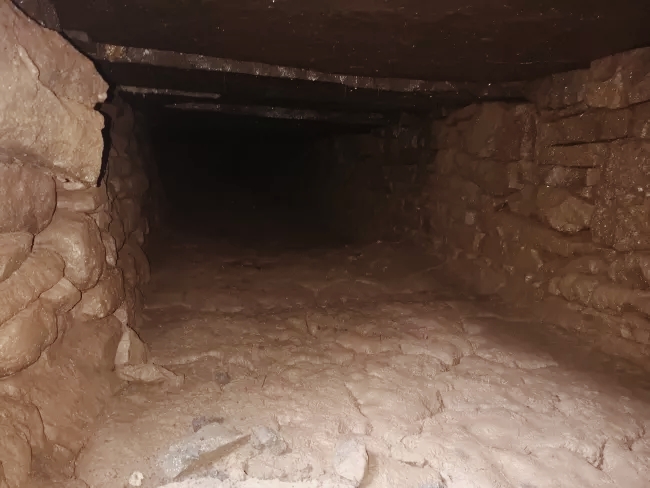 |
| Electrical workers found a part of the medieval tunnel. (Image credit: Western Power Distribution) |
There is no evidence that the tunnel was ever constructed.
Near the site of a soaring 12th-century Abbey in Wales, a
hidden medieval tunnel has been uncovered.
When digging a hole for a new power line pole in a
customer's backyard in Monmouth shire, near the English border, electrical
staff from Western Power Distribution (WPD) in Wales found the tunnels by
mistake.
The 4 foot (1.2 meter) tall man-made tunnel system is built
alongside a brook that passes through Tin tern village and the Wye Valley.
There is no indication that the tunnels were ever constructed, and
archaeologists who have explored them have no idea what they were used for or
how far underground they extend.
The digging team made the
amazing discovery of what they believed was a cave shortly after the excavation
work began "WPD technician Allyn Gore, who was involved in the discovery,
said in a statement. I've been interested in other excavations where we found
old wells and cellars that weren't on any plans, but nothing quite like this.
According to the WPD
announcement, the power company has now rerouted maintenance work away from the
tunnels to allow for an archaeological study that could take years to complete.
Unknown origins
According to WPD, the tunnels are not depicted on any maps
of the region produced by the ordnance survey — the United Kingdom's national
mapping agency — that date back to the 18th century.
Many of the regular checks and permits were in place before
work started, according to Gore's comment. Nothing odd about the site had
turned up in any of our sketches or documents.
Residents have been walking on top of tunnels for years
without understanding it because the tunnels pass under a village footpath.
According to Cadw (the Welsh Government's historic and
cultural heritage service), the tunnels may be connected to the nearby Tintern
Abbey, which was founded by Cistercian monks in 1131 and is considered a
national symbol of Wales and a gothic masterpiece. After King Henry VIII's
dissolution of the monasteries in 1536, the Abbey fell into disrepair, and if
the tunnels were part of the Abbey, this may explain why there are no records
of them. (Cadw is a Welsh word that means "to guard.")
 |
| Near the tunnel's discovery, the famous Tintern Abbey can be found. (Photo courtesy of Shutterstock) |
According to WPD, the brook that runs alongside the tunnels
also runs past the remains of several old furnaces and iron works in the Wye
Valley, indicating that the tunnels may have been related to the local
metalworking industry rather than the Abbey.
According to WPD, a team of archaeologists plans to excavate
the site after meeting with Cadw scientists, who were "really
impressed" and intrigued by the tunnels.
This research could reveal why the tunnels were constructed
and what they were used for.
Originally Published By Live Science.





0 Comments